|
2021 State of the Ecosystem for the Northeast U.S. Shelf
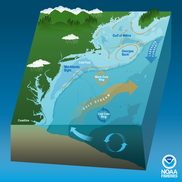
The U.S. Northeast Shelf is one of the world’s most productive marine ecosystems. Seafood production, commercial and recreational fishing, ocean-dependent jobs, and other services provided by the ecosystem are all being affected by a changing climate. Two new reports provide an updated picture of conditions supporting fisheries in the U.S. Northeast Shelf marine ecosystems. One report focuses on Georges Bank and the Gulf of Maine, two ocean regions off New England, and the other report focuses on the Mid-Atlantic Bight. These are the three major regions within the U.S. Northeast Continental Shelf Large Marine Ecosystem.
|
How Much is a Clam Worth to a Coastal Community?
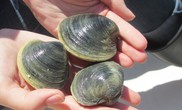
Shellfish can help improve water quality, but how much value do they bring to coastal communities? A new study estimates that oyster and clam aquaculture provides $2.8–5.8 million in services that remove excess nitrogen from the coastal waters of Greenwich, Connecticut. The study was conducted by shellfish biologists, economists, and modelers from NOAA Fisheries, NOAA’s National Centers for Coastal Ocean Science, and Stony Brook University.
|
Rare Dataset Benefits Future Flounder Stock
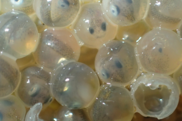
Even without a pandemic, figuring out the number of eggs a fish will lay during its spawning season is a difficult task. While this information is important to fishery biologists, long-term data are scarce. That hampers researchers’ ability to answer a fundamental question important for fishery managers: what affects the ability of marine fish, and fish populations, to replace themselves in an open ocean? The pandemic made answering this question even more difficult—but our researchers persevered.
|
North Atlantic Right Whales On the Move in the Northeast

On March 21, 2021, 89 North Atlantic right whales were spotted by scientists from the Center for Coastal Studies in Cape Cod Bay. Just a few days later, on March 30, scientists spotted 57 North Atlantic right whales off Southeast New England in and around the wind energy development areas. They were seen by scientists from the Northeast Fisheries Science Center flying a sighting survey. Scientific whale surveys are key to monitoring changes in when and where right whales are found. Changes include increased use of areas off Southern New England slated for wind energy development.
|
Cooperative Research During a Pandemic
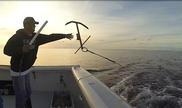
In February and March our science center’s Cooperative Research Branch hosted two webinars about conducting cooperative research safely during the COVID-19 pandemic. The first webinar focused on how field work was adapted to ensure safe operations, and a second webinar focused on how fishermen worked with researchers to independently collect scientific data. We’ve compiled what was discussed in the webinars and put together a list of 10 takeaways. These include things like having mutual trust, considering each person’s risk tolerance, expecting and adjusting to higher costs, and having a plan B in case someone gets sick.
|
Artificial Intelligence Aids Protected Species Conservation
Atlantic Sea Scallops and Ocean Acidification
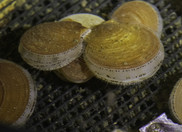
The Atlantic sea scallop fishery is the second-most valuable single-species fishery in the United States, and it’s the most valuable wild scallop fishery in the world. However, sea scallops may be vulnerable to forecasted changes in ocean chemistry. Researchers at our science center are collaborating with sea scallop fishermen, industry stakeholders, and managers to understand how climate change and ocean acidification may impact the fishery and the communities that depend on it. The goal of this work is to ultimately develop recommendations to help sea scallop fishermen and fishing communities adapt to changing ocean conditions.
|
Assessment Oversight Panel Meetings
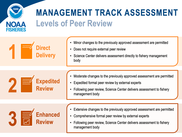
Assessment Oversight Panel meetings are a critical step in the management track assessment process. These meetings bring together panel members with partners and stakeholders representing multiple organizations to determine the appropriate level of peer review for each fish stock. Peer reviews are an important step in the scientific process—they ensure the research and data used are of the highest quality. The next Assessment Oversight Panel meeting is scheduled for May 20 and will focus on Georges Bank and Gulf of Maine cod stocks.
|
Woods Hole Science Aquarium Remains Closed
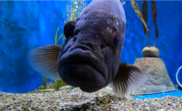
A warm thank you to all who have taken the time to check in on our science center’s Woods Hole Science Aquarium residents and staff. We’re still closed and we don't have an anticipated opening date at this time. We continue to work on a plan that will allow visitors to safely visit our aquarium. When we have our plan in place, we'll announce it on our website, social media channels, and through our eNewsletter. In the meantime, we invite you to meet some of our aquarium’s most fascinating and charismatic animals.
|
Plankton Archive: A Window to the Past
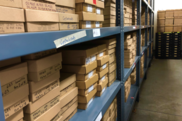
Sometimes we need to collect new data from the past, and one of our most important tools to achieve this is archived samples. Our Oceans and Climate Branch maintains one of the largest plankton sample archives in the region at the Narragansett Laboratory. This archive contains over one million samples of zooplankton, fish eggs, larval fish, and squid paralarvae collected every year since the early 1970s. These historic samples are helping us understand whether the quality of food available, measured as the caloric content of copepods, has changed as our climate changes. We are also studying changes to the types of species and abundance of squid in our warming waters. This physical sample archive allows us to go back in time, to plankton collected in the past, and make comparisons and predictions for the future.
|
Ken Sherman: Plankton Biologist with a Global Perspective
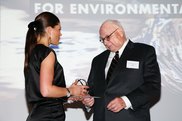
In celebration of our 150th anniversary, we are highlighting people who helped build the foundation of fisheries and marine science. Meet Ken Sherman, 60-year NOAA Fisheries employee, now retired but still working on global fisheries. Ken Sherman’s long career began with a fascination with fish at an early age. He was born in 1932 and raised in Boston, Massachusetts, where he spent time as a boy with his father at the Boston Fish Pier, watching the fishermen bringing in their catch.
|
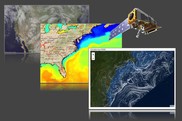
While looking out at the ocean, have you ever wondered, “Where would the waves and currents take me if I was out there?” And what about those messages in bottles that people find on the beach—how did they get there? Scientists across NOAA, including at our science center, have spent decades studying and mapping the ocean’s currents and features. The work they’ve done, and continue to do, helps answer all kinds of important fisheries-related questions about fish migration, and larval and nutrient transport throughout the ocean.
|
From the Director: NEFMC Scallop Survey Working Group
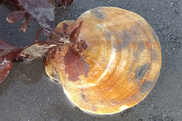
I was happy to be able to speak at the first meeting of the New England Fishery Management Council (NEFMC) Scallop Survey Working Group. Sea scallops are a highly valuable fishery and participants in the fishery have a strong commitment to science through the Research Set Aside program. I applaud Tom Nies and Jonathan Peros of the NEFMC for putting this working group together and thank all the experts who have agreed to participate. This is an excellent opportunity to work together to improve our science in support of management. Jon Hare, Center Director
|
|
|
Upcoming Events and Announcements
May 14 Pre-Proposal Deadline: NOAA and Department of Energy Research on Offshore Renewable Energy Interactions
May 19 Seeking Proposals to Conduct Components of the At-Sea Monitoring Training Program
May 20 Assessment Oversight Panel Meeting: September Management Track Stocks
May 25-28 Atlantic HMS Advisory Panel and Recreational Roundtable / Large Pelagics Survey Workshop Meetings
|
|
|
|
|